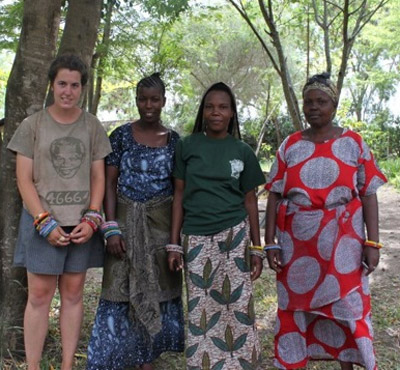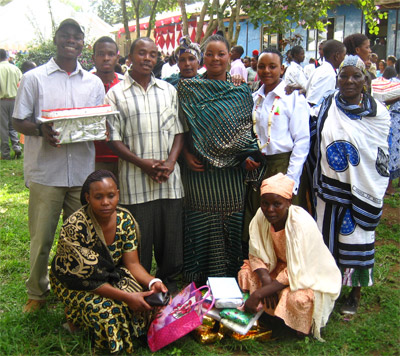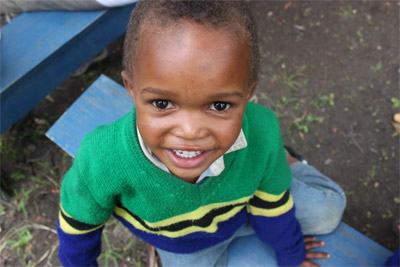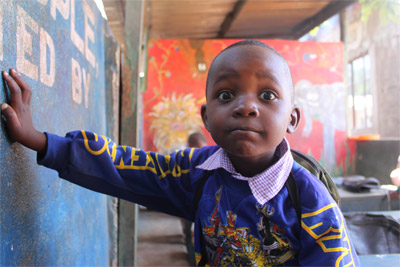Cara Stephenson The Urong'a Nursery School Interview

Cara Stephenson The Urong'a Nursery School Interview
Currently, in the village of Urong'a, Tanzania, villagers are faced with a number of daily issues. While Urong'a is definitely not the poorest village in Africa, access plays a huge part in the issues that the villagers are faced with daily. As well as limited access to food sources and healthcare, larger towns that house schools and medical facilities are quite far away. The children in the village are faced with having to walk for hours a day to attend school in nearby towns, and being halfway up a mountain this is hard work for young children. Mental health is also an issue within the town; many children's educations are being impacted by their own or their parent's disabilities.
To help aid this, in 2011, local Tanzanian man Clemency Nanyaro opened the Urong'a Nursery School. Nanyaro, with the help of the community in the village of Urong'a has opened the school for children ages 3-5 and since its opening; more than 100 students have enrolled. But the school is currently not receiving any funding from the government despite their attempts at grants, there are also currently only two teachers employed at the school. These teachers have agreed to work for a very small wage but it is evident that new teachers will be required soon as the population of the school grows. The villagers all assist the teachers in anything they may need and also contribute what they can. The Villagers also helped build the buildings required for the school.
Unfortunately the school does require more funding as the population is growing and more teachers are required.
Recently, I had the privilege of speaking to Cara Stephenson regarding the school in Tanzania. Cara is a student at Melbourne University and has spent a lot of her time since 2010 in Africa both travelling and volunteering. She has had the opportunity to help Clemency Nanyaro with the school and since returning has been a strong ambassador raising money for the both Urong'a and the school.
Interview with Cara Stephenson
Question: Why did you first choose to go to Tanzania in Africa?
Cara Stephenson: Africa is not for everyone. And not everyone I know has a desire to go there. But I can guarantee that if you travel there, and regardless of whether you enjoy it or not, it will change you completely.
I have always had a fascination of Africa, so in 2010, I took the year off university and decided to actually do something about it. Tanzania seemed like a logical place to start- it's still incredibly poor, but safe- and the perfect place to be based before exploring the rest of Southern and Eastern Africa. Question: How did you make it happen? Did you originally go through a program that sets up volunteer work in Africa?
Question: How did you make it happen? Did you originally go through a program that sets up volunteer work in Africa?
Cara Stephenson: Initially in 2010 I went off on a round the world trip, wanting to do a few months volunteering during my six months in Africa.
I spent three months in a small village in Tanzania, with a local NGO that I volunteered directly through. The NGO TAMIHA works with women on a microfinance program and teenagers at a vocational school.
Question: Can you tell us a little bit about what you were doing while you were in Tanzania?
Cara Stephenson: It was on this first trip in 2010 that I first met Clemency- the man who I started the school with. Clemency was my safari guide, and one of the most genuine people I met on my trip. I visited his village, Urong'a, up in the mountain of Meru, and we saw the need for a nursery school. His village is quite remote, but in the most beautiful setting. The nearest school is many kilometers away, and there is nothing for the children to do until the age of six when they start school (and the long trek to school).
So we got permission from the local government and the school board to start a school, fundraised within the community to buy the building materials, and got land donated in front of the church thanks to the local Pastor.
I had to move on before I saw the completion of the school, but stayed in close contact with Clemency during the rest of my trip.
I came home and further fundraised for the school, raising money for school supplies, a blackboard, teachers wages etc.
Question: You're selling bracelets to raise money for the school, can you tell us a little bit about them? For example who makes them what they're made of.
Cara Stephenson: I went back to Tanzania at the end of last year, to check back on the school and the other NGO I had volunteered with.
I realised we needed another form of income for the school. We have a few: Clemency runs safaris with the profits heading back to the school, we sell coffee from the region to tourists, and then I came up with the bracelet scheme.
I bought around five hundred bracelets from local women, all of whom are HIV+, and paid a higher than normal rate for them, due to their amazing efforts.
The bracelets are colourful and beaded, and a bit of a symbol of the people of Africa.I've brought them home, and have started selling them to anyone who'll listen to my story. A design friend of mine made me some swing tags for the bracelets, and lots of friends have offered to sell them to their own friends. Question: When did you first go to Africa? You've been at least a couple of times. How long do you go for each time?
Question: When did you first go to Africa? You've been at least a couple of times. How long do you go for each time?
Cara Stephenson: My first trip to Africa was back in 2010.
I spent the first three months volunteering and beginning to start the school, and then travelled to Malawi, Zambia, Zimbabwe, Botswana, Namibia and South Africa.
My next trip was end of 2011/early 2012, and this trip was to check on the school and all my new family in Tanzania. I also travelled to Rwanda, Uganda and Kenya after this.
Question: What inspires you about the work you are doing in Tanzania?
Cara Stephenson: The people of Africa.
Most people have this vision of Africa, mostly fueled by the rare media coverage it receives. Africa is poor and full of poverty, this is true. But it is also the most hopeful place on earth. The people of Africa are full of hope, and generous and kind beyond measure.
Every day I hear stories from the people, mostly related to poor health and HIV, yet they still have optimism for the future of Africa and their own futures.
These people inspire me.
Question: Where do you see yourself going in the future? Do you have plans to go back?
Cara Stephenson: Hell yes! I have already booked tickets back to Tanzania at the end of the year! Africa, and in particular, Tanzania, has crawled under my skin and I don't see it leaving anytime soon.
Africa now feels more like home that Australia.
In the future, I want the school to become self-reliant and completely sustainable. If I can help the school find a way to have its own income, I would be completely happy.
For myself, studying my Masters of Public Health, I would like to work in the future in HIV or sexual health in the context of developing countries, either in a clinical or community setting. This is a brilliant story of one village, with so little, who despite the boundaries have banded together to create a better future for their children.
This is a brilliant story of one village, with so little, who despite the boundaries have banded together to create a better future for their children.
Cara is continuing to raise funds for the Urong'a Nursery School. She has created a Facebook page to raise awareness. She can be contacted via this page as well.
Cara is selling the bracelets made by women from the town of Urong'a for $20 each. It is a worthy cause and the bracelets are bright and colourful, reminding you of the hope and love this village has for its people. Information on buying the bracelets can be found on the Urong'a Nursery School Facebook page here: Facebook.com/uronganurseryschool
MORE





